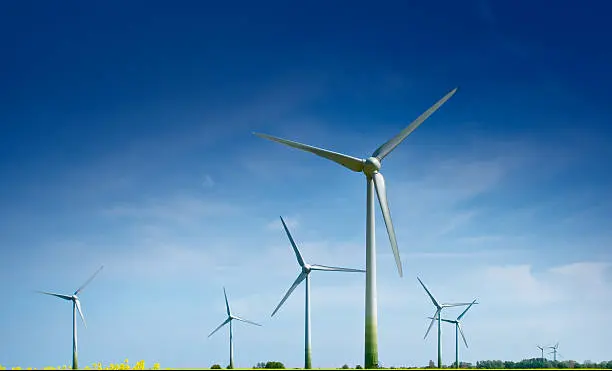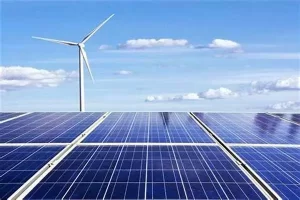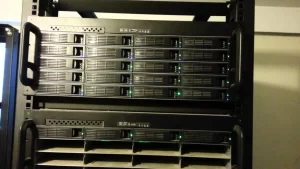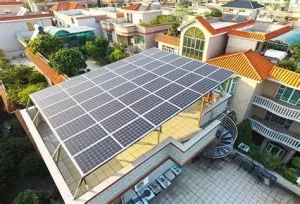Power Station Using Wind Energy: Harnessing the Power of Wind
Introduction
In the face of growing energy demands and the pressing need for sustainable, clean energy solutions, power station using wind energy have emerged as key players in the global energy landscape. This article explores the journey of wind power from theoretical concept to practical application and delves into the workings of modern power station using wind energy, showcasing their role in the energy revolution.

From Concept to Reality: The Evolution of Wind Power
Wind power is one of the oldest forms of harnessing natural energy, dating back to ancient times when windmills were used for grinding grain and pumping water. However, the concept of converting wind energy into electrical power didn’t come to fruition until the late 19th century. Here’s a brief history of its development:
Ancient Beginnings:
Early windmills were simple machines used to perform mechanical tasks such as grinding grain and pumping water.
These early applications laid the groundwork for the future development of wind energy technology.
19th Century Innovations:
The late 1800s saw the first experiments with generating electricity from wind power.
Pioneers like Charles F. Brush and Poul la Cour built some of the earliest wind turbines that could generate electricity, although these were rudimentary compared to modern standards.
20th Century Breakthroughs:
The 1930s and 1940s marked significant advancements, with the construction of larger and more efficient wind turbines.
Despite these improvements, the technology remained limited by high costs and technical challenges, preventing widespread adoption.
Energy Crisis and Renewed Interest:
The 1970s oil crisis spurred renewed interest in alternative energy sources, including wind power.
Governments and researchers invested heavily in improving wind turbine technology, leading to substantial gains in efficiency and cost-effectiveness.
Modern Era and Offshore Expansion:
Advances in materials, aerodynamics, and computer modeling have led to the development of highly efficient, large-scale wind turbines.
The move offshore has opened new frontiers, with wind farms being built in the ocean to take advantage of stronger and more consistent winds.
Inside a Modern Wind Power Plant
Modern power station using wind energy are complex installations that require sophisticated technology and engineering. Here’s an in-depth look at the components and operation of these plants:
Wind Turbines:
Blades: Typically made from lightweight composite materials, designed to capture the maximum amount of wind energy.
Rotor and Hub: The blades are connected to a rotor, which in turn is connected to a hub. This assembly converts the kinetic energy of the wind into rotational energy.
Nacelle: Houses the generator, gearbox, and control systems. It is positioned at the top of the tower and rotates to face the wind direction.
Towers:
Usually constructed from steel or concrete, towers elevate the turbines to heights where wind speeds are higher and more consistent.
Towers must be robust to withstand the forces exerted by the wind and the weight of the nacelle and rotor assembly.
Control Systems:
Advanced control systems optimize the turbine’s performance by adjusting the blade angle (pitch) and the nacelle’s orientation (yaw) to capture the maximum amount of energy.
These systems also monitor the turbine’s operation to ensure safety and efficiency.
Grid Connection:
Wind turbines generate electricity at varying voltages and frequencies. This power is conditioned and converted to match the grid’s requirements before being transmitted.
Substations play a crucial role in stepping up the voltage for long-distance transmission and integrating the power into the grid.
Applications and Benefits
power station using wind energy offer a host of benefits and applications:
Environmental Impact:
Wind power generates electricity without producing greenhouse gases or other pollutants, significantly reducing the carbon footprint compared to fossil fuels.
Land use for wind farms can often be shared with agriculture, allowing for dual land use.
Energy Security:
Diversifies the energy mix, reducing dependence on imported fuels and enhancing energy security.
Provides a sustainable and inexhaustible source of energy.
Economic Benefits:
Creates jobs in manufacturing, installation, maintenance, and support services.
Stimulates local economies, especially in rural areas where wind farms are often located.
Challenges and Future Trends
While power station using wind energy have numerous advantages, they also face challenges:
Creates jobs in manufacturing, installation, maintenance, and support services.
Stimulates local economies, especially in rural areas where wind farms are often located.
Challenges and Future Trends
While power station using wind energy have numerous advantages, they also face challenges:
Intermittency:
Wind is not constant, and its variability can affect the reliability of wind power. Energy storage solutions and grid management strategies are being developed to address this issue.
Aesthetic and Environmental Concerns:
Wind turbines can impact landscapes and local wildlife, particularly birds and bats. Mitigation measures are being implemented to minimize these effects.
Technological Advances:
Future trends in wind power include the development of larger, more efficient turbines, improved energy storage systems, and better integration with the power grid.
Offshore wind farms are expected to grow significantly, taking advantage of the stronger and more consistent wind conditions at sea.
Conclusion
Power station using wind energy have come a long way from their ancient origins, evolving into sophisticated and highly efficient systems that play a critical role in the global transition to sustainable energy. By harnessing the power of the wind, these plants contribute to reducing greenhouse gas emissions, enhancing energy security, and stimulating economic growth. As technology continues to advance, wind power will become an even more integral part of our energy future, helping to create a cleaner, more sustainable world.
Contact us
- [email protected]
- Tel: +86 13651638099
- Address: 333 Fengcun Road, Fengxian District, Shanghai
Get A Quote Now!

Read more

Unveiling Photovoltaic+Energy Storage: Four Major Application Scenarios Leading the Future of Energy
In this way, the energy landscape is evolving, and one of the most thrilling developments in renewables is the integration of photovoltaics energy storage.

From Theory to Practice: Four Methods for Estimating Photovoltaic Power Generation
Photovoltaic power generation has become an essential part of modern energy solutions, particularly in home solar systems and distributed power applications

Rack-Mounted Lithium Iron Batteries: Creating Efficient and Reliable Energy Storage Solutions
When it comes to modern energy solutions, rack-mounted lithium iron batteries are taking center stage in a variety of industries. Whether you’re powering data centers, stabilizing energy for households, or keeping critical systems online at 5G base stations, these batteries have become the unsung heroes of our electrified world.

Late Night Energy Saving Tips: How to Maximize Electricity Savings During Off-Peak Hours
With rising energy costs, homeowners are increasingly exploring innovative ways to save on their electricity bills. One effective approach is utilizing off-peak hours—times when electricity rates are significantly lower due to reduced demand.
